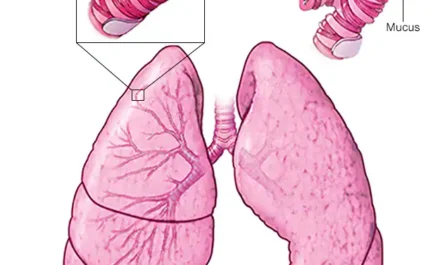Losing weight and reducing abdominal fat doesn’t necessarily require extreme diets or intense workouts. With consistent and healthy lifestyle changes, it’s possible to lose up to 2 kilograms (approximately 4 pounds) per week—depending on your starting weight and dedication. To achieve this safely and sustainably, you’ll need to integrate effective habits into your daily routine.To lose weight faster 6 key strategies.
A Note on Tracking Your Progress to Lose Weight Faster: 6 Key
Weighing yourself daily may seem like a good way to monitor progress, but it can cause unnecessary stress and fluctuations—especially for women during their menstrual cycle, when hormonal changes can lead to temporary water retention. Ideally, weigh yourself once per week at the same time of day for the most accurate reflection of your progress.
1. Eat Slowly and Listen to Your Body’s Signals
Taking your time while eating gives your brain the opportunity to receive the “full” signal from your stomach before you’ve overeaten. Eating too quickly often leads to missing this cue, causing you to consume more than necessary.
Paying attention to your natural hunger and fullness signals is key for maintaining a healthy weight. Prioritize meals rich in fiber, protein, and healthy fats—like vegetables, fruits, lean meats, and nuts. These foods not only nourish your body but also help you stay full for longer, minimizing unnecessary snacking.
2. Stay Hydrated Throughout the Day
Drinking enough water is essential for weight loss. It helps manage hunger, reduce water retention, and assist your body in flushing out waste products that could slow your metabolism.
What to Drink:
Plain water
Coconut water
Freshly made smoothies without added sugar
Herbal or unsweetened teas
What to Avoid To Lose Weight Faster: 6 Key Strategies
Sodas and sugary drinks
Packaged or instant juices
Alcohol
Flavored or chocolate-based drinks
Aim for 1.5 to 3 liters of fluids daily, depending on your body size and activity level. This equals roughly 8 to 12 cups per day.
3. Move More – Even in Small Ways
You don’t need to engage in intense workouts to lose weight. What matters most is consistency. Aim to be active at least three times per week, and incorporate movement into your daily routine.
Easy Ways to Stay Active:
Take the stairs instead of the elevator
Park further away from your destination and walk
Go for a short walk after meals
Walk your dog in the evening
Strength training is also beneficial—not only for burning calories but also for increasing muscle mass, which enhances your metabolism and promotes long-term fat loss.
4. Eat a Balanced Diet – In Moderation
Completely cutting out food groups, especially carbohydrates, can lead to cravings and rebound weight gain. A better approach is to eat a variety of foods in smaller, controlled portions.
ALSO VISIT
Smart Eating Habits:
Eliminate added sugars from beverages like coffee, tea, or smoothies
Add fiber-rich seeds (e.g., chia, flaxseed) to yogurts or smoothies
Eat a small portion of healthy fats daily (e.g., 5 chestnuts or 10 peanuts)
Choose one type of carbohydrate per meal (prefer whole foods like sweet potatoes, brown rice, beans, lentils, corn, or peas)
Begin meals with a salad to increase satiety
Use 1 tablespoon of olive oil on cooked meals for healthy fat
Stop eating once you feel full—don’t eat out of habit or emotion
Fresh fruits and vegetables are nutrient-dense and low in calories, making them a cornerstone of any effective weight loss plan.
5. Avoid Skipping Meals or Letting Yourself Get Too Hungry
Long periods without eating can increase the likelihood of making poor food choices, such as grabbing calorie-dense processed snacks. To stay in control of your hunger and support your metabolism, prepare for the day with healthy snack options.
Healthy Snack Ideas:
A small handful of nuts or dried fruit
A piece of fresh fruit
Low-fat yogurt
Veggie sticks (e.g., carrots or celery)
Tomato slices with olive oil and a pinch of salt
Coconut shavings
A boiled egg
These healthy alternatives will keep you from reaching for high-sugar or high-fat convenience foods. Over time, you may notice that what you thought was hunger was really a response to stress, boredom, or habit.
6. Keep a Food Journal
Writing down everything you eat throughout the day can increase your awareness of eating patterns, emotional triggers, and nutritional gaps. It’s a practical way to identify what might be helping—or hindering—your weight loss efforts.
What to Record:
Type of meal (e.g., breakfast, snack, lunch)
Time you ate
Foods and beverages consumed
Where you ate and who you were with
Any distractions (e.g., TV, phone)
Your mood at the time of eating
Try to keep a food journal for at least 3 to 7 days. This information can help you make better decisions and adjust your eating habits for long-term success.
Final Thoughts
Losing weight doesn’t require perfection—it requires consistency. By adopting these six strategies, you’ll be supporting your body’s natural ability to shed excess fat in a sustainable and healthy way. Stay patient with the process, and remember that small daily actions can lead to lasting change.



